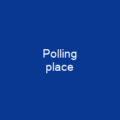Opinion Polls: A Window into Public Sentiment
Imagine a world where every citizen’s voice is heard, and their opinions are accurately reflected. That’s the essence of an opinion poll—a human research survey that captures public sentiment from a specific sample. But how do these polls work, and why have they become such a critical tool in understanding society?
The Birth of Opinion Polls
Opinion polls trace their roots back to 1824 when the first known example was reported prior to that presidential election. Since then, these surveys have evolved from local city phenomena into global tools used by governments and businesses alike.

From The Literary Digest to Gallup
The first national survey was conducted by The Literary Digest, which correctly predicted several presidential elections. However, its subsequent surveys were not always accurate. Enter George Gallup and his team of Archibald Crossley and Elmo Roper, who revolutionized the field with smaller but scientifically based polls that proved more reliable.
Evolution Through Technology
As technology advanced, so did opinion polling methods. From traditional telephone surveys to Internet-based ones, different organizations now use a variety of techniques. Statistical learning methods have even been proposed to model and predict voting intentions using social media content.
Polling for Political Insight
Benchmark polls provide initial snapshots of candidate popularity before announcing their bids, helping campaigns understand the electorate and refine messaging. Tracking polls, on the other hand, offer repeated measurements over time, but can be subject to dramatic fluctuations due to sampling errors or uneven distribution of voters.
Deliberative Opinion Polls
Combining public opinion poll elements with focus groups, deliberative opinion polls allow voters to discuss issues before being polled again. Exit polls, conducted just after voting, provide a more accurate picture of election outcomes and voter preferences, though they can be criticized for their accuracy.
The Challenges of Opinion Polls
Despite their utility, opinion polls face numerous challenges. Sampling error, nonresponse bias, response bias, and even the wording of questions can all introduce inaccuracies. Plurality voting systems, question order, and social media usage further complicate matters.
Bias and Inaccuracy
Comparisons between polls often rely on question wording, which can lead to differences in results. To mitigate bias, pollsters use various techniques like rotating question order or using psychometric methods. However, involuntary facades and false correlations can still occur when people pretend to have opinions they don’t truly hold.
Coverage Bias
Another significant issue is coverage bias, particularly with the rise of mobile phones. Cellphone-only households tend to include minorities and younger voters, while landline users may be underrepresented or overrepresented depending on weighting techniques used by polling companies.
The Impact of Opinion Polls
Polling can influence voter behavior through various effects like the bandwagon effect, strategic voting, and even the boomerang effect. These impacts are debated among researchers but cannot be ignored in modern politics.
Regulation and Transparency
In some jurisdictions, publication of opinion polls is restricted during election periods. However, most Western democratic nations have no such regulations. The Gallup Poll Cumulative Index lists over 10,000 questions without results, highlighting the vast amount of data available for analysis.
Conclusion
Opinion polls are a powerful tool that helps us understand public sentiment and make informed decisions. However, they come with their own set of challenges and biases. As technology continues to evolve, so too will our methods of conducting these vital surveys. The key is to remain vigilant and transparent in our approach to ensure the accuracy and reliability of opinion polls.
You want to know more about Opinion poll?
This page is based on the article Opinion poll published in Wikipedia (retrieved on February 10, 2025) and was automatically summarized using artificial intelligence.






